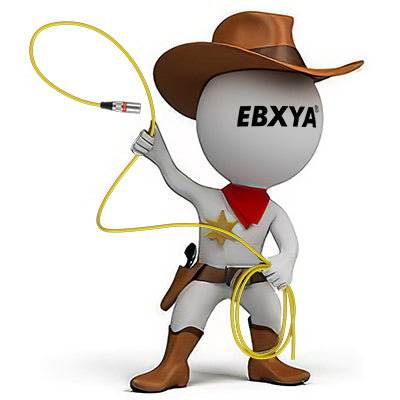
The truth about guitar cables that guitarists must know(Sum)
Share
From all the truths in the previous article we can summarize them as the following points:
1.Lower guitar output impedance + lower amp input impedance The capacitance of the cable in this case will not make a big difference, and using this capacitance with a standard tone control system will not make much of a difference. If you increase the capacitance value of the tone control, then you can cut off the high frequencies more significantly (note: if you change your standard pickup to an active pickup, then keep this in mind and your tone control system will no longer work) Synthesis: you can use almost any cable and it won't make much difference.
2.Lower guitar output impedance + higher speaker input impedance Turn the guitar volume on full and connect the guitar output directly to the speaker input (lower guitar output Z lower speaker input Z) However, we need to lower the volume control and use the speaker input as a separate path for the guitar output. Based on this, not only has a more obvious effect on the cable capacitor, but also on the control of this higher resistive type has a very obvious effect (greater than 250k).
3.Higher guitar output impedance + lower amp input impedance This will reduce your guitar level and your sense of high frequencies, so we don't recommend it.
4. Higher guitar output impedance + higher amp input impedance Passive pickup guitar with tube amp, which is a common setup since the 50s and 60s. In this case then, the capacitance of the cable plays a very influential role. Usually, spiral cables will have a larger capacitance than standard cables and are acoustically very different from each other. However, because the speaker is equipped with a higher quality cable, and can provide the guitar with a minimum load, so as to better ensure the high frequency "gloss" and the overall level. In summary, if you want to have a guitar setup that suits you better and don't want to suffer the hassle of cable selection, then consider replacing your standard pickup with an active one. Or you can add an impedance converter ("buffer") after the guitar output.
If you insist on using a standard guitar and a high impedance amp, there are still a few things you can do to maintain the tone of your guitar.
1. Use the shortest possible guitar cable, as the longer the cable the more cable capacitance will be generated.
2.cable specifications usually include a capacitance figure (usually referred to as "microfarads per meter"), so if you are trying to make your own connection cable, choose the lowest pF per meter to select your own cable. (But usually the more knotty and heavier cable will have more capacitance, while the lighter weight cable will have less capacitance)
3.Try to avoid using spiral cable, and keep the volume control as high as possible.
4.Don't believe all those "hi-fi cables" that will change your sound, but they may not. If you don't accept any advice that differs from your setup, you can also save your money and buy some cheaper cables.
5.Before I conclude, I think it should be noted that this article omits the issue of reactance, which, however, interacts with the guitar's cable capacitance. But I think the main issue involved here is still the fundamental factor that affects the sound, so let's come back to the issue of reactance at a later date.
Remember, if you find that the tone of the instrument does not sound right, do not adjust the amp immediately: because many things have been decided before you connect the amp. Now, if a guitarist finds that the tone produced between two different cables is also different, you can explain it to him according to this article.
